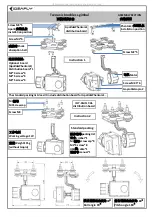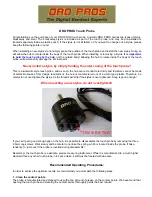
FT-111(D) Panel Weighing Indicator, Technical Manual, Rev.1.0.0, May 2019
Page
35
of
146
5 FT-111(D)
F
UNCTIONS
5.1 Basic Functions
Zeroing
Zeroing corrects the drifts of the unloaded scale from the zero point.
1. Unload the scale.
2. Press
key.
3. Centre of zero appears
symbol on the display.
4. Check the center of zero sign on the left of the display. If it doesn´t appear, press the
key once
more for correct zeroing.
Zeroing is available in the limited range by zeroing parameter 514,
page 61
Automatic zero point correction
Zero point is corrected automatically for minor deviations if the change is within the range of limited zeroing range value.
Disable this correction at the applications like tank weighing, batching, filling etc. against wrong zeroing at feeding. Refer to
Automatic Zero Tracking parameter 515,
page 61
Automatic zero-point correction range is limited together with zeroing range above.
Automatic zeroing at power on
Zero point is corrected automatically at power on the instrument to compensate zero drifts of the scale if the scale is always
power on when unloaded. This feature should be disabled for tank, silo, hopper scales etc. Power on zero has a limited
range and the instrument announces [ POWER ON ZERO ERR ] error prompt in case of out of range.
Press
key to start indication without zeroing and call service. If the range is 3%, the residual drift cannot be
displayed. Refer to Power on Zero parameter 513,
page 60
Basic weighing
1. Zeroing the unloaded scale.
2. Place weighing item on the scale.
3. Wait until the motion monitor disappears.
4. Read the weighing result.
If the loading is out of the indication range the prompts below are displayed.
Under of negative indication limit Over than positive indication limit
Taring
Taring is used to determine a net weight of a material if any tools like containers are needed. The weight of these tools can
be eliminated. FT-112(D) Panel weighing indicator has 2 different taring features.
Subtractive tare
This taring type is the mostly used way which tare value reduce the weighing range in Net as
Maximum Net weight = Scale capacity - Tare weight
Advantages of this taring are smaller capacity load cell requirement, bigger load cell signal range at
weighing, temporary gross indication availability, tare weight data on the printout etc.
Additive tare
This taring type is the mostly used way if the tare weight is too heavy against the material weight and the
scale division which is required. The scale range is not changed after taring. The net weight range is
always equal to the scale capacity. The maximum tare is limited and is not transferred to PC or to the
printer.
















































